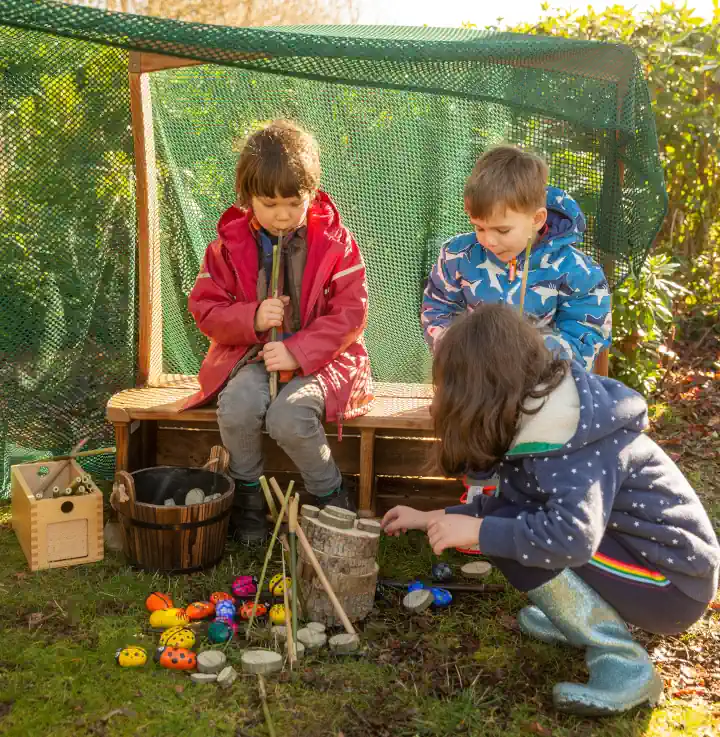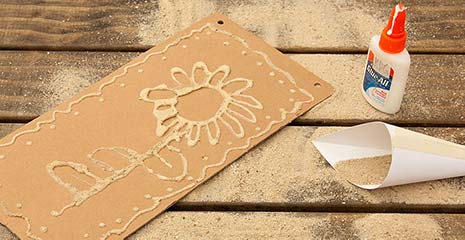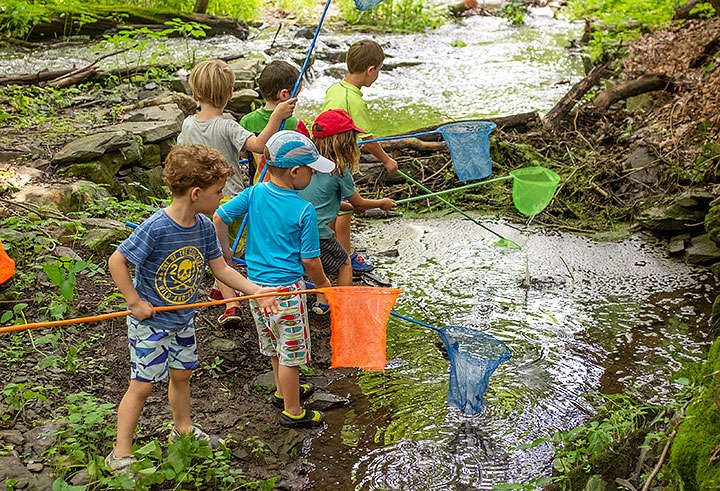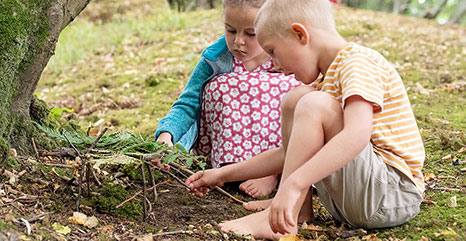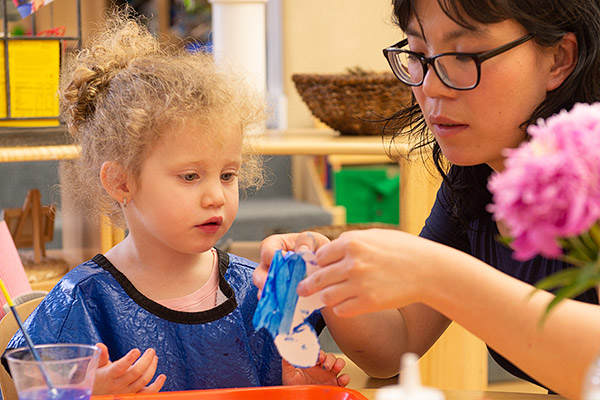Making the most of outdoor environments in early childhood settings
| March 2022Five-year-old Isla is walking through an overgrown patch of grass and cow parsley. She has been attending my setting for two-and-a-half-years, spending her days playing in our natural outdoor environment. The ground is uneven and there are nettles about, so Isla and the other children move with awareness. She paused and looked at her peers, declaring loudly, “We trust nature!” then she looked at me and asked, “Millie, are we nature?” I replied, “Yes, I think we are a part of nature and nature is a part of us,”. Isla turned back to her friends and said, “We trust nature and we trust each other because we are nature!”
Isla not only feels confident in nature, she has come to understand that she is herself a part of the natural world. The many rich learning experiences she has had in encountering wildlife, growing food and playing with natural materials has helped the outdoor world to become a language through which she thinks, feels and makes meaning. It is through many hours spent playing in a possibility-rich outdoor environment that Isla has come to feel this way.
In recent years there has been growing interest in outdoor play. Many educators have trained in Forest School or other approaches to learning in nature; residential streets and schools have begun ‘Playing Out’ initiatives; there is a reconnection to early childhood pioneers, like Froebel, Steiner and the McMillan sisters, who placed great emphasis on the value of nature for holistic development.
Amid rising concern over childhood inactivity, obesity and a decline in mental health, playing outdoors has been recognised as an essential part of holistic development in childhood. Furthermore, the global Covid-19 pandemic has highlighted the importance of being outdoors to reduce the spread of coronavirus. It has never been a more important time to reflect upon and develop the outdoor environments that babies and young children access in early years settings. Whether you have a spacious, natural garden or a tiny, inner-city space, all gardens have the potential to be rich learning environments that support a child’s health, sense of well-being and their development across the curriculum.
Sustainability and biodiversity
Sustainability should be a core value of all early childhood provision, as it is about safeguarding the future of the youngest generation. Your setting can take simple steps to be environmentally responsible, while also educating children in sustainable practices.
Growing food to eat is a rich and fascinating learning experience for young children that promotes their health, physical development and understanding of the world. If you have ample space outdoors, you can establish several vegetable beds and grow enough food to include on your menu or to share with families. But even small, concrete yards can produce food. Many foods can be grown in containers, such as strawberries, and some foods will do well in bags that can be stored away during the winter months, such as potatoes.
Fruit trees (such as apple, pear and plum) are low maintenance and a wonderful addition for early years gardens. Small spaces can include fruit trees by training them along a wall in an espalier design. Consider using food producing plants to build the structure of your outdoor environment. For example, if you need a barrier between two areas in the garden, you could grow thornless blackberries or loganberries along a trellis instead of installing fencing.
Growing a range of fruits, vegetables, herbs and edible flowers will not only provide food for your community, but it will also produce shade, clean air and beauty in your gardens. It may also attract a whole range of pollinating insects, birds and mammals to your garden, even in the city. These visitors will be fascinating to young children and offer endless opportunities for learning across all curriculum areas!
You can take it further if you wish. Teach children about the importance of saving water by collecting rainwater for the plants you grow; roofs and sheds can have rainwater collection systems installed at low cost. Set up a composting area for kitchen scraps to be turned into high quality compost to use in the garden; your local council should provide compost bins at a reasonable price.
Promoting learning and development through play
It is recommended that children in the early years are physically active for a minimum of three hours per day, but it is thought that only around 1 in 10 children are. Being physically active not only promotes health, it is also essential for a child’s brain development. Our gardens are key to promoting physicality.
Ideally, gardens should provide opportunities for children to engage in lively, challenging movement play, moving their bodies in a variety of ways including climbing, running, balancing, lifting, swinging and hanging. The greater the variety of movement types your garden offers children, the better their sensory integration, core strength, coordination, agility, stamina and fine motor control will be. These are essential skills for well-being and development across the curriculum, so should be a real priority in all settings.
Large gardens can achieve this by having hills and slopes, asymmetrical/varied terrain, opportunities for swinging, hanging and climbing as well as clear space where children can really run and move with energy. But many settings simply do not have the space or the budget to invest in large-scale structural changes to their gardens. It will still be possible to create movement-rich play spaces!
All gardens, big or small, should provide some natural loose parts: earth, water and sand. Not only do these open-ended materials have high play-value, they also encourage physical activity through schematic play. You can enhance these materials by adding a small selection of buckets, containers, wheelbarrows, spades and tubes to play with. Allow children the freedom to transport and transform materials (for example, mixing sand and water) as this will encourage the physical nature of their play.
You could also add heavy items like large planks of wood which children can use in a variety of ways. Lifting and moving them is excellent for their physical development. Avoid always making life too easy for the children! For example, if they want to play with water, they might need to transport it in buckets from the tap, across the garden to the water table. Not only are they building their physical strength and stamina, they will also be building positive learning dispositions, problem-solving skills and other curriculum areas.
Elizabeth Jarman has written extensively about Communication Friendly Spaces. These are intimate places where children can gather in small groups, often away from adults and talk with each other. Think dens, playhouses and seating areas. Settings with large, natural gardens can consider planting a living den made from willow which will not only be aesthetically pleasing, but will also promote biodiversity and clean air. But small gardens can also be communication-rich places. Secret dens and quiet seating areas can be created with loose parts like large sheets of fabric, sticks, crates and log stumps. The benefit of these is that they can be packed away and won’t permanently take up space.
End thoughts
Through carefully planning your outdoor environment, children will have all of their senses stimulated and their learning promoted across the curriculum. Beyond this, outdoor play will promote their lifelong holistic health, brain functioning and learning dispositions. Gardens should feel like gardens, not classrooms that happen to be outdoors! Grow as much as you can to keep the garden feeling green and natural; even the smallest urban gardens can accommodate a lot of greenery and wildlife. As five-year-old Isla so pertinently highlighted, we are a part of nature and nature is a part of us; if your outdoor environment benefits your local wildlife, you can be sure it is enriching the educational opportunities for the children too.



